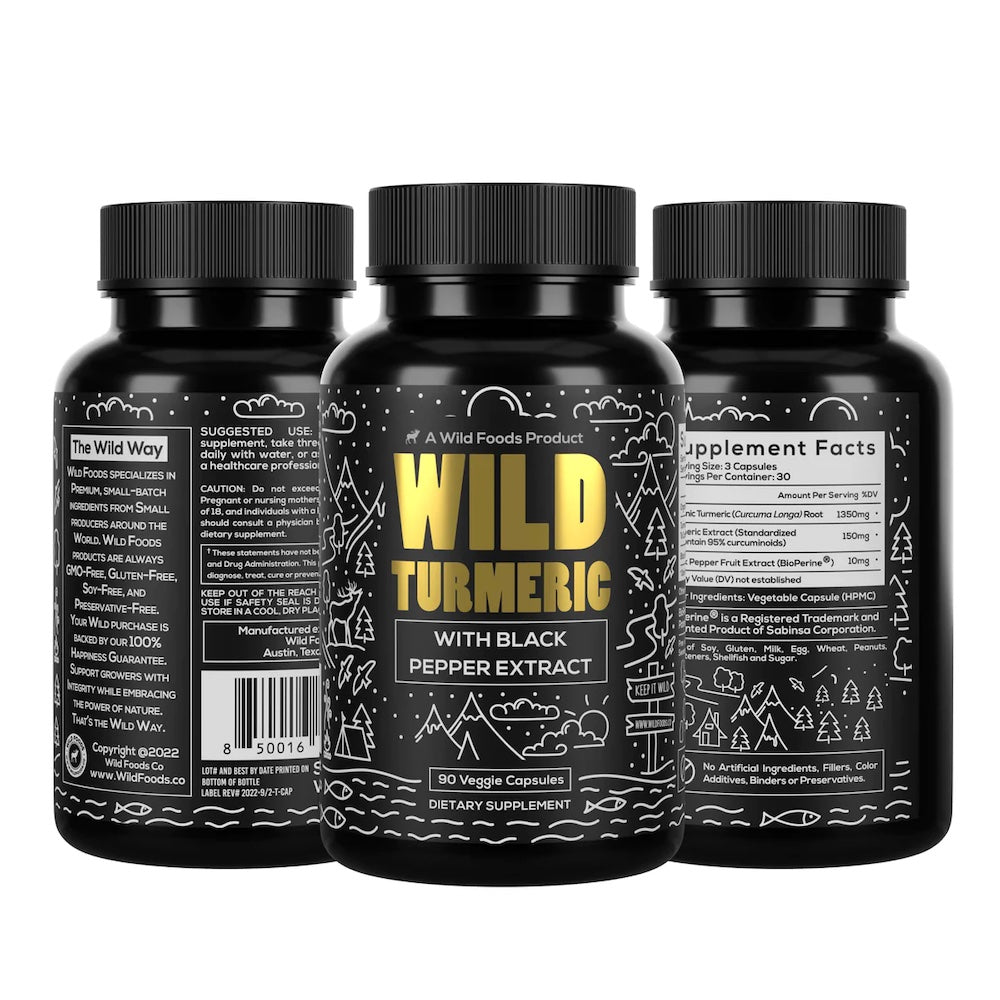Going Wild For Turmeric

68,700,000. That’s how many results there were upon looking up “turmeric” in a Google search at the time of writing this article.
It’s astounding. In miles, that’d be over 22,200 trips by car from the state of California to the state of Maine.
Turmeric is a popular topic these days. And while there may already be over sixty-eight million references to turmeric on the web, we wanted to share why we go Wild for turmeric!
It’s Bright Yellow-Orange, But What Is It?
If you’ve eaten curry before, you’ve most likely had turmeric. It’s the main spice in traditional curry dishes, and it’s included in a lot of other Indian and Asian meals as well. The taste is warm yet bitter, almost like black pepper, with a definite earthy flavor.
Also known as “Indian saffron,” turmeric is a root from the flowering Curcuma longa plant, a member of the ginger family. While ginger has a warm yellow-brown color, turmeric is known for its bold yellow-orange.
That bright color often earns its name in many recipes as “golden.” Golden spice milk, golden lattes, and more.
While it is commonly used as a clothing dye in India for saris and Buddhist monks’ robes, it is most often used as a food spice due to its flavor and incredible health benefits.
What’s So Healthy About Turmeric?
Curcumin. No, we didn’t change subjects here; curcumin is a naturally occurring chemical found in turmeric root. Producing pretty flowers, this perennial plant can grow wild and be over 3 feet tall.
The curcumin packs the most benefits into this brilliant root, making it a functional food – offering potentially positive effects on health beyond just essential nutrition.
Anti-inflammatory is one of the significant health perks often associated with this fantastic rhizome. People sometimes use it to help their body deal with:
- Arthritis
- Joint Pain
- Stomach Pain
- Crohn’s Disease & Ulcerative Colitis
- Irritable Bowel Syndrome
- Diarrhea
- Intestinal Gas
- Stomach Bloating
- Heartburn
- Loss Of Appetite
- Jaundice
- Liver Problems
- H. Pylori Infection
- Stomach Ulcers
- Gallbladder Disorders
- High Cholesterol
- Alzheimer’s Disease
- Diabetes
- Worms
- Urinary Bladder Inflammation
- Kidney Problems
Turmeric is one of those fantastic spices that offers tremendous benefits! Beyond fighting fatigue, it may also relieve headaches, depression, colds, bronchitis, lung infections, hay fever, fibromyalgia, fever, menstrual problems, and itchy skin.
And when turmeric powder is mixed with a bit of water and applied to the skin, it’s also been known to be used when dealing with ringworm, leech bites, acne, bruising, sprains and swellings, soreness inside of the mouth, gum disease.
Amazing, But Are There Side Effects?
Turmeric is safe to use daily in recommended doses by most people. Of course, you should consult your doctor if you have any concerns or are on any medications — particularly anti-coagulants or non-steroidal anti-inflammatory drugs (NSAIDs).
While some turmeric products present concerns of lead or other heavy metal exposure, each batch of our Wild Turmeric products is always COA tested and must pass before being offered for sale. We won’t sell a product that we wouldn’t use. So quality and safety are always a must!
How Can I Use Turmeric?
Here are a few of our favorite ways to enjoy this super spice, Wild Turmeric Powder:
- Wild Recipe: Turmeric Tonic
- Wild Recipe: Turmeric Cauliflower Risotto
- Wild Foods Recipe Video: The Best Golden Milk Ever
